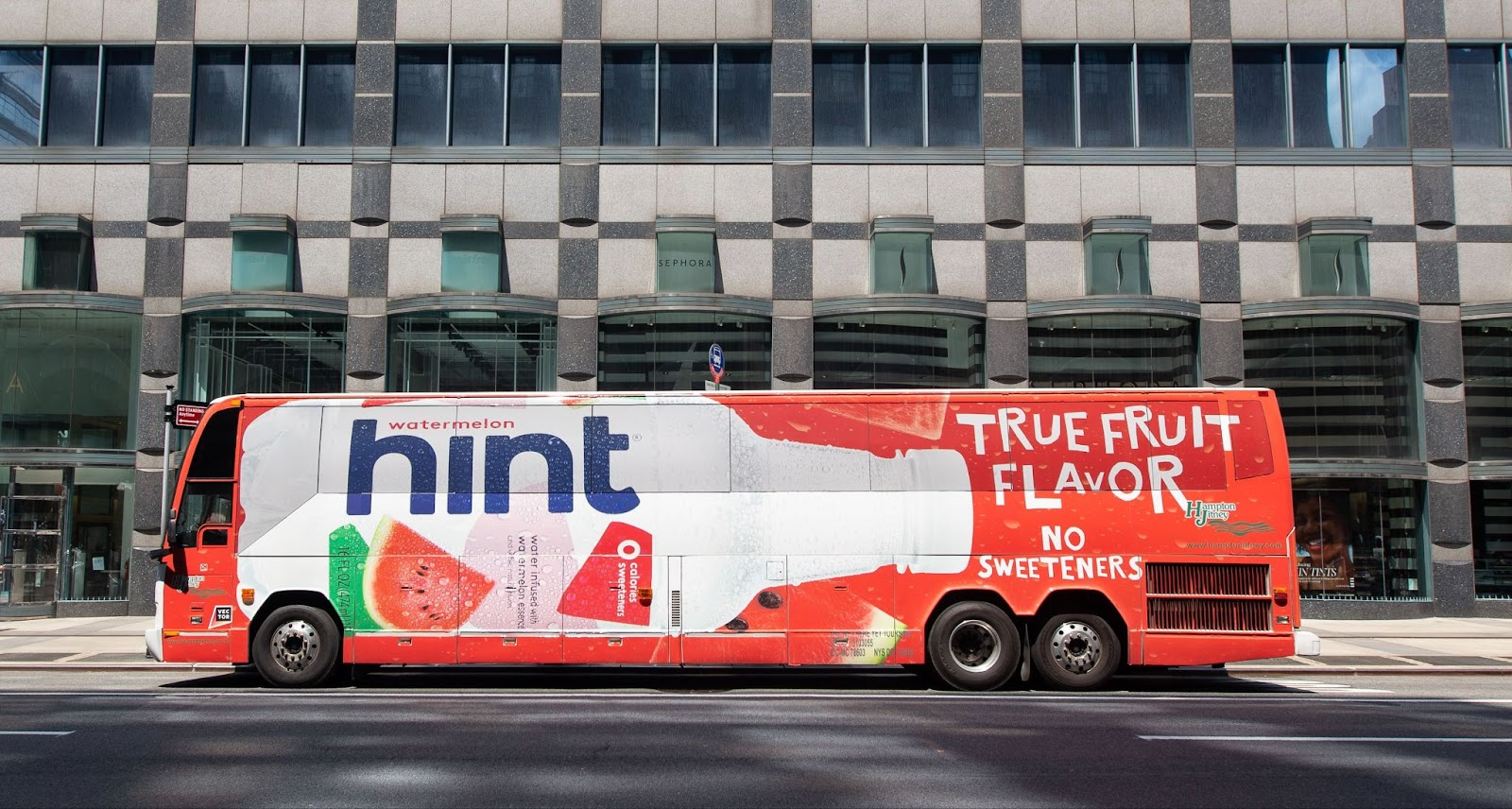Bus advertising is a great way to move your message through neighborhoods and city streets. Bus advertising sends your message to pedestrians, vehicles, and riders.
For the first-time Bus advertiser, it can be challenging to know where to start. What kinds of Bus ads will resonate with your audience? What formats are available? How do you target specific areas of a market? How much should you budget? What other formats can support your bus advertising campaign?
In this article, you will learn all the basics of Bus advertising, the pros and cons, and how to tell if your campaign efforts are successful.
What is Bus Advertising?
Bus advertising is a form of Out-of-Home (OOH) Transit advertising. Advertisements can range from simple to complex, executed through colorful images, text, and graphics placed on the exterior and interior of buses.
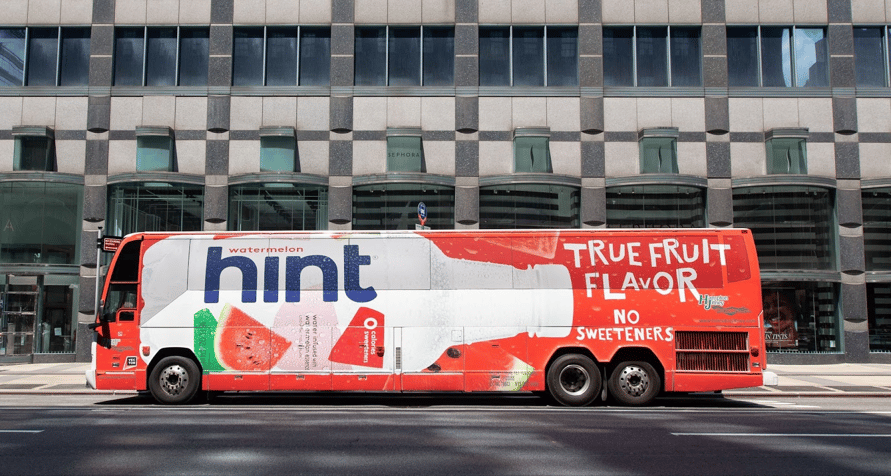
Bus advertising travels through busy urban areas and quiet residential neighborhoods to reach a broad audience. These "moving Billboards" can reach a wide variety of demographics and geographic locations.
From vinyl Wraps and Posters to Interior Cards and Decals, Bus advertising has a variety of formats. You can target a specific area or advertise on multiple Buses to find your audience.
Some advertisers use multiple creatives throughout a market to entice consumers to interact with their message. It's usually recommended to buy bus advertisements in packages. These packages are based on Target Ratings Points (TRPs) to provide a certain number of exposures in a market or budget.
What Types of Ads Can You Buy for Buses?
When considering Bus advertising, you should be aware of the formats available, your campaign needs, and your budget. You'll want to know your target audience and your campaign goals, so you can use the most effective placements to reach them. Here are some of the most popular types of Bus advertising:
- Bus Wraps: These eye-catching advertisements cover the bus's exterior. Full Wraps cover the entire exterior, whereas partial wraps, such as Ultra Super Kings and Fullbacks, cover the side or the back of a bus.
- Posters: Posters are a traditional form of Bus advertising that can be less expensive than Bus Wraps. Posters can be placed outside or inside the Bus in designated advertising spaces. These are sold in several sizes: Kings, Queens, Tails, and Interior Car Cards.
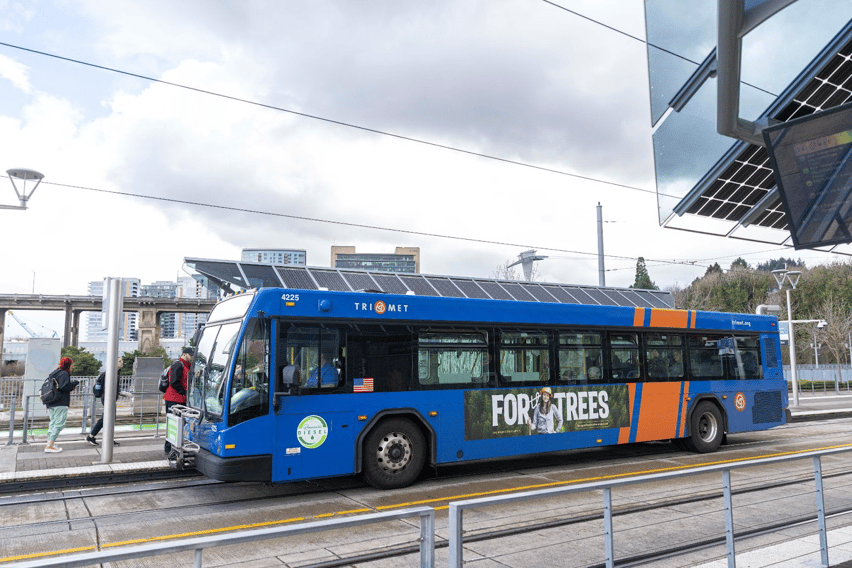
- Kings: This is the largest Poster advertising space on a Bus and is on the driver’s side, covering most of the area.
- Queens: The second-largest bus advertising space is usually on the Bus's passenger side.
- Tails: The smallest advertising space on a Bus is located near the license plate on the back of the Bus.
- Interior Car Cards: These are small posters on the Bus's interior.
- Floors, Ceilings, and Seats: Unexpected advertisements on the floor, ceiling, or Bus seats can be a great way to grab audiences' attention.

- Double Decker Bus: Special Double Decker Bus ad space is sold through a few vendors. Some Buses have Digital Displays along the side. Some Double-Deckers, called Glass Buses, have see-through compartments, perfect for interactive OOH displays.
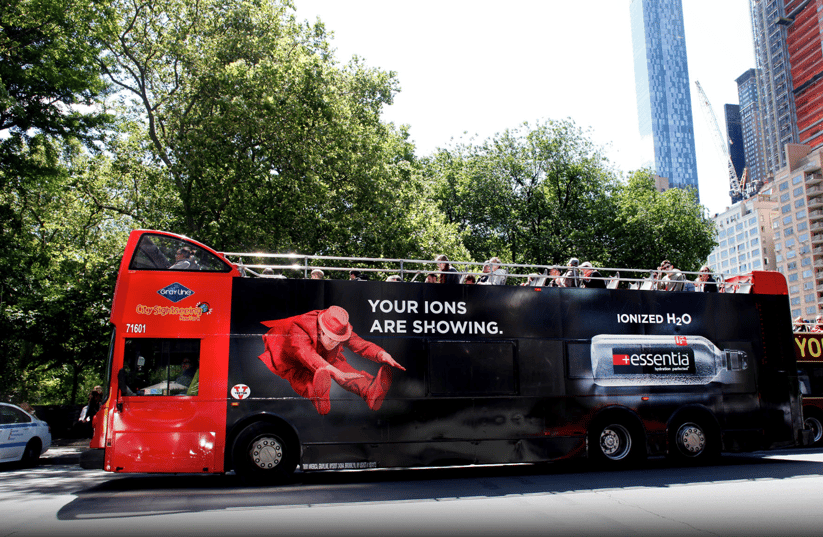
- Bus Shelter Advertising: Considered a form of Street Furniture advertising, Bus Shelter advertisements are installed in the covered areas where people wait for the bus. Bus Shelter advertising can be static or digital and cover interior and exterior vantage points.
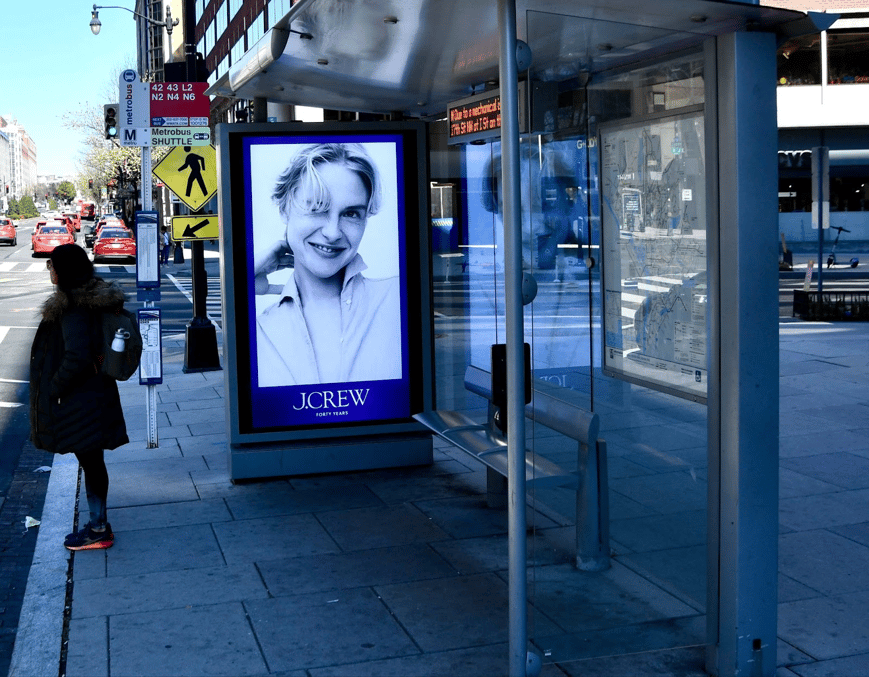
Now that you know what formats are available, let's talk about how to get started with Bus advertising.
How Do You Advertise on a Bus? Step by Step
Advertising on a Bus or several Buses takes many steps and the ability to manage multiple moving pieces. Beyond determining your budget, goals, and format, you must choose launch dates and how long your ad will run. Advertisers often work with OOH Specialists to help strategize, manage, and measure their campaigns. Here are the steps to Bus advertising:
- Contact an OOH Specialist or the transportation organization for information, including availability, pricing, and requirements.
- Determine your campaign details, including budget, goals, and target audience. This will help you choose the type of advertising space and how long your campaign should run.
- Customize your target audience based on many factors, including geographic targeting, demographic targeting, timing targeting, creative targeting, and language targeting.
- Schedule the campaign with the media supplier or local transit authority. Your budget, goals, target audience, and ad space availability will all affect how your campaign is scheduled and the length of the campaign. However, you should also consider the seasonality of your business or industry. If you sell sunglasses, for example, you would only want to target an area with sunshine in winter if you were talking to those that need them for a vacation to escape the cold winter. It would help if you also considered what your competitors are doing. Launching your campaign at a different time may be better if they are running a major campaign.
- Choose the type of advertising space that suits your requirements. When choosing the space, consider its location, size, and whether your target audience will likely see it.
- Design the ad to be eye-catching, memorable, and convey your message.
- Submit the ad for approval. Bus ads must be approved by the transportation company or local authority to comply with regulations and guidelines.
- Pay for the campaign according to agreed-upon pricing and payment terms. Bus advertising costs can vary depending on the ad's location, duration, and format. The most expensive type, Full Bus Wraps, can range on average from $2500 to $5000 for a four-week campaign. On average, partial Bus Wraps cost less at $1,500 to $3000 per four weeks. Posters and interior displays are the most cost-effective options for those on a budget. A poster averages $150 to $500 per four weeks, and interior displays average $100 to $300 per four weeks. However, these are only general price ranges, and you'll want to work with an OOH specialist or transit authority to get an accurate quote for your specific campaign.
- Monitor the effectiveness of the ad during the campaign and make adjustments as needed, including changes to design, location, or ad targeting. Post-campaign, evaluate overall metrics and whether you have reached your goals.
While these steps seem cumbersome, working with an OOH specialist can help you to manage this process and make it a turnkey event.
What are the Benefits of Bus Advertising?
Buses travel through various routes, which makes them easy to spot for a large audience. They can reach a diverse audience, including pedestrians, drivers, and bus riders. However, it has several other benefits:
- High Frequency: Buses run on a frequent schedule. This means the same people will see the ad repeatedly over time. The frequency is the number of times an individual may encounter the advertisement. High frequency can help reinforce the message and increase brand awareness.
- High Reach: Bus advertising is not centered around one portion of the city. This means it can reach more people, including commuters, bus riders, and pedestrians.
- Targeted Advertising: Bus advertising can be targeted to garages or neighborhoods. It can be a great way to reach urban and suburban populations, including smaller counties in your target market. Garages are where the buses are housed. Typically folks buy general market campaigns, but there is an opportunity to target by Garage. For example, some markets may have Downtown, East Side, and South Side Garages. These are bus hubs for those areas. If an advertiser only wants to target the East Side, they can buy their program out of that Garage. Depending on market demand, it may cost a premium to do so. Coverage can also be weighted so there is general market coverage, but a higher percentage comes from a particular Garage.
- Non-intrusive: Bus Advertising doesn't interrupt the consumer's experience n the same way TV, digital, or radio commercials do. This can leave the consumer with a positive impression of the ad.
- Lower CPM: Though it can sometimes have a high production cost, Bus advertisements often have lower CPMs than other forms of advertising. According to Solomon Partners, the average CPM for outdoor advertising is between $2 and $9.
- Broader Market Coverage: Some areas may be zoned out or have limited OOH. For these markets, Bus advertising is a great option to reach your audience through outdoor advertising.
Bus advertising has many benefits, including high visibility and market coverage. But it does also have potential drawbacks or considerations.
What are Some Common Problems with Bus Advertising?
Though Bus Advertising is an excellent format, there are also some issues to consider.
In the US, a typical outdoor campaign runs for four weeks. Producing a fully-wrapped bus can be pricey for a 4-week run. To maximize the budget, an eight or 12-week run helps to defray the high cost of printing and installing this particular format.
Bus advertising can also be restrictive. The advertisements are run through transit authorities and often require approvals. For example, the majority of transit authorities do not accept alcohol advertisements.
Weather is another factor to consider. Extreme weather may cause the ads to get dirty, adhesives to fail, or the print quality of the advertisement to deteriorate.
Buses are also only available in some markets. Bus campaigns can also be more effective in certain markets than in others. They work best in urban and suburban areas. For example, Seattle would be an excellent place for a Bus advertising campaign, but a rural town in West Virginia may not be.
How Do You Measure Bus Advertising?
In the United States, Bus advertising is measured through Geopath. Geopath is an organization that provides standard measurements for OOH.
Geopath audits how many impressions a bus advertisement garners along its routes. Using Geopath and other industry tools, OOH specialists can help advertisers to understand their campaign's impressions, reach, and frequency.
Some advertisers may use a QR code to connect their bus campaigns to online channels. However, since buses are moving targets, it may be difficult for audiences to scan the QR code unless the bus is stopped along its path.
Bus campaigns can also be connected to social media. Particularly unusual images or creative executions can generate social media shares of the ad that broaden your advertising reach to an online audience.
Good Examples of Bus Ads

The Molson Coors Free Rides Program partnered with the Cincinnati transit system to promote and provide free bus rides to those attending a Bengals Football game.
How Does Bus Advertising Fit into Your Overall OOH Strategy?
Bus advertising complements other OOH formats, such as Billboards, Bus Shelters, and Digital signage, to create a cohesive and integrated campaign that reaches consumers across various touch points in their neighborhoods and places they frequent. By working with an OOH Specialist, you can determine what strategy will fit the needs of your campaign and find the specific locations where your target audience will likely be present. Consider Bus advertising for your next OOH campaign to generate buzz and brand awareness and create a cohesive and consistent brand message across your advertising initiatives. Reach out to Billups today!
